Occupational Safety Training for Firework Manufacturing
99,000 ₫
Note: The above price is calculated per person and may vary depending on the number of participants in the course and market fluctuations. For more accurate pricing support, please refer to the price list or contact our consulting staff directly.
Occupational safety is an important issue in firework manufacturing factories and needs to be addressed promptly to ensure the health and safety of workers and enhance the reputation of businesses. The Occupational Safety Training course is one of the effective solutions to raise awareness of accident prevention for workers involved in firework manufacturing.
Table of Contents
Toggle1. Overview of Fireworks
a. What are Fireworks?
- Fireworks are used to create explosions or special effects including sound, light, and smoke, as well as to display visual and audio effects during festivals, celebrations, and commemorations. There are many types of fireworks, such as outdoor silver fountains, indoor silver fountains, handheld fire fountains, firework trees, spinning flowers, silver waterfalls, color-changing shell fireworks, fountain shell fireworks, and flower spray fireworks.
- Currently, the fireworks manufacturing industry in Vietnam is developing strongly to meet domestic market demand as well as export needs. However, it is a highly competitive industry that requires creativity, research, and investment in advanced technology.
- Fireworks manufacturers in Vietnam are gradually improving their production processes and product quality to create impressive and safe fireworks displays for customers. Additionally, the fireworks industry also contributes to job creation for workers.

b. Fireworks Manufacturing Machinery
Common machinery used in fireworks production includes:
- Firework Head Closing Machine: Used to seal the firework head, which contains explosive substances, colorants, and effect agents.
- Firework Mixing Machine: Used to mix components of fireworks, including explosives, colorants, and effect agents.
- Firework Assembly Machine: Used to assemble the components of fireworks, including heads, bodies, and other parts.
- Firework Casing Sewing Machine: Used to sew together the firework casings.
- Wire Cutting and Bending Machine: Used to cut and bend steel wire to create internal frames and structures for fireworks.
- Firework Pressing Machine: Used to press materials into various shapes and sizes to create special effects for fireworks.
- Firework Surface Coating Machine: Used to spray surface coatings on fireworks, including paint, waterproof layers, and other protective substances.
- Firework Printing Machine: Used to print images and text on fireworks to create customized effects.

c. Representative Fireworks Factories
- Z121 Fireworks Factory, under Chemical Company 21 One-Member Limited Liability Company, located in Vinh Tan Commune, Vinh Thanh District, Binh Dinh Province. This is one of the largest and most reputable fireworks factories in Vietnam.
- Z121 Factory uses modern equipment and machinery imported from countries such as Germany, Italy, China, and South Korea. Its fireworks products are produced in various forms, colors, and sizes to meet customer demand. The factory has also applied advanced technologies, such as computer-assisted fireworks manufacturing, ensuring more precise and faster production.
- In addition to fireworks, Z121 Factory also produces explosives, blasting agents, accessories, and fireworks equipment to meet domestic and international market needs.
- Z121 Factory ensures compliance with safety and environmental regulations during fireworks production to protect employees and the environment. The factory also regularly trains and enhances the skills of its staff to maintain product quality and workplace safety.
d. Specific Jobs in a Fireworks Factory
Group 1
- Chief Executive Officer, Deputy CEO, and department heads in the fireworks factory.
Group 2
- Safety Officers: Manage safety within the factory, design safety procedures, and supervise employees to ensure compliance with safe work processes.
Group 3
- Firework components are produced, assembled, and carefully inspected to ensure safety during use.
- Packaging: Fireworks are packaged according to type and size. Employees ensure fireworks are tightly and safely packed.
- Storage: Fireworks are stored in cold or dry warehouses depending on flammability. Periodic inspections ensure quality and safety.
- Transportation: Fireworks are safely packed and transported via trucks or containers to prevent accidents and explosions.
Group 4
- Office, service, sales, and marketing tasks.
- Production management, quality management, human resources, materials management, and financial accounting management.
- Firework design: Engineers and designers calculate technical parameters such as size, shape, color, duration, altitude, and safety of various fireworks.

2. Overview of Occupational Safety Training for Fireworks Manufacturing
This article focuses on Group 3 because Group 3 directly participates in production and faces the highest safety risks. For other groups, see here.
a. What is Group 3 Occupational Safety Training?
- Group 3 Occupational Safety Training consists of sessions that provide workers with awareness on how to prevent workplace accidents.
- This training helps employees recognize hazards and reduce risks of accidents during work.
REGISTER FOR OCCUPATIONAL SAFETY TRAINING SERVICE
b. Training Duration
Initial Safety Training Duration
- Total training duration is at least 24 hours, including examination time.
- 8 hours of theory on occupational safety policies and laws
- 8 hours of theory on basic occupational safety knowledge
- 4 hours of theory on specialized training content
- 2 hours of practical training on specialized content
- 2 hours for final theoretical examination
Training centers typically split the course into multiple sessions depending on workers’ schedules, usually 6 sessions over 3 days, provided the company arranges continuous learning time.
Periodic Safety Training Duration
- Before the occupational safety card expires, workers must undergo periodic training, with duration at least 50% of the initial training duration.
Explanation: Total periodic training duration is at least 12 hours, including examination time. After completing the course and passing the exam, workers receive a renewed safety card.
c. Training Content
| No. | TRAINING CONTENT | TRAINING HOURS | |||
| Total | Including | ||||
| Theory | Practice | Examination | |||
| I | Occupational safety policies and laws | 8 | 8 | 0 | 0 |
| 1 | Overview of legal documents related to occupational safety and hygiene. | 6 | 6 | ||
| 2 | Standards and technical regulations for occupational safety and hygiene. | 1 | 1 | ||
| 3 | Specific regulations from government agencies regarding safety in constructing, expanding, or renovating production facilities, and using, storing, or inspecting machines, equipment, materials, and substances with strict safety requirements. | 1 | 1 | ||
| II | Basic occupational safety knowledge | 8 | 8 | 0 | 0 |
| 1 | Basic knowledge of workplace hazards and harmful factors. | 4 | 4 | ||
| 2 | Methods to improve working conditions. | 1 | 1 | ||
| 3 | Safety culture in production and business. | 1 | 1 | ||
| 4 | Rights and obligations of employers and employees; safety policies; role of safety officers. | 1 | 1 | ||
| 5 | Safety rules, safety signs, use of protective equipment; first aid skills and occupational disease prevention. | 1 | 1 | ||
| III | Specialized training content | 6 | 4 | 2 | 0 |
| Comprehensive knowledge of machines, equipment, hazardous substances; risk assessment and safe work procedures with strict safety requirements. | 6 | 4 | 2 | ||
| IV | Final examination | 2 | 2 | 0 | 0 |
| Total | 24 | 22 | 2 | ||
See more training content for all 6 groups
d. Occupational Safety Card
After completing the safety training course and passing the exam, workers are issued a safety card (commonly called a Group 3 occupational safety certificate).
The Group 3 safety card shows personal information including name, date of birth, job, and work environment, as well as training duration, official stamp, and signature confirming course completion.
According to Clause 2 of Article 24, Decree 44/2016/ND-CP, there are two cases:
- If both employer and employee have a labor contract, the employer must sign, stamp, and endorse the safety card for the Group 3 trainee after completing the training and passing the exam.
- If the worker is freelance or seasonal without a labor contract, the training unit must sign, stamp, and endorse the safety card after the worker completes the training and passes the exam.

3. Identifying Hazards in Fireworks Manufacturing
Fireworks manufacturing is a high-risk occupation due to the storage and use of explosives and chemicals that are flammable and explosive. Here are some common hazards in the fireworks manufacturing process:
- Using explosives in fireworks manufacturing can cause fires and explosions, affecting the health and safety of factory workers.
- Some chemicals used in fireworks manufacturing, such as iron, barium, copper, magnesium, nickel, selenium, mercury, lead, zinc, copper, etc., can be toxic to humans.
- During transportation, fireworks may encounter unexpected impacts, leading to explosions en route, posing safety risks to everyone.
- Fireworks manufacturing involves tasks requiring high focus and precision. Failure to comply with safety regulations can lead to occupational accidents such as burns, explosions, injuries to ears, eyes, hands, and feet.
4. Common Occupational Accidents in Fireworks Manufacturing
Fireworks manufacturing is a dangerous industry that can lead to many occupational accidents. Common accidents in the process include:
- Fireworks explosions: This is the most common accident in fireworks manufacturing, which can occur due to production mistakes or during transportation.
- Machinery fires and explosions: Accidents can happen when machinery used in fireworks manufacturing malfunctions. If not repaired timely or used correctly, machines can cause fires or explosions.
- Trapping or suffocation: Workers may get trapped or suffocated by materials or fireworks products when working in confined spaces.
- Chemical toxicity: Chemicals used in fireworks manufacturing can be toxic if not used or stored properly. Exposure can have serious health consequences.
5. Safety Measures for Fireworks Manufacturing
Ensuring occupational safety during fireworks manufacturing is crucial to prevent unwanted accidents. Key safety measures include:
- Wear full personal protective equipment, including safety glasses, masks, gloves, protective clothing, and safety shoes.
- Ensure fireworks manufacturing machines and equipment are regularly inspected to guarantee safety.
- Limit the use of hazardous chemicals and ensure safe storage and transportation.
- Use safety systems such as fire alarms, firefighting systems, emergency exits, etc.
- Provide comprehensive training for employees on safety procedures, emergency measures, handling emergency situations, and accident prevention.
- Ensure full compliance with occupational safety regulations and keep them updated regularly.
- Perform periodic monitoring and inspections to detect and address occupational hazards promptly.
- Have emergency response plans ready to address safety issues.
- Periodically conduct occupational environment monitoring in factories to collect and analyze harmful factors affecting workers, then adjust to reduce hazards and prevent occupational diseases.

6. Benefits of Fireworks Manufacturing Occupational Safety Training
An Toan Nam Viet provides enterprises with the following benefits after completing occupational safety training courses in accordance with Decree 44/2016/ND-CP on occupational safety and hygiene:
- Workers can recognize potential occupational hazards and take preventive measures to avoid accidents.
- Enterprises can establish risk prevention measures in production, operation, and maintenance processes.
- Reduce costs associated with workplace safety risks.
- Uninterrupted production increases labor productivity and product quality.
- Ensure compliance with occupational safety laws, reducing legal risks.
- Enhances corporate reputation and professionalism, elevating the company’s brand value.
An Toan Nam Viet training courses are solutions to prevent external hazards affecting individuals, helping them avoid injuries or even fatalities.
REGISTER FOR OCCUPATIONAL SAFETY TRAINING SERVICE
7. Customer Feedback after Fireworks Manufacturing Safety Training
An Toan Nam Viet has years of experience supporting enterprises across Vietnam, especially in southern provinces. This responsibility is highly valued, and thus our occupational safety training is increasingly professional. Our growth is driven by positive feedback and suggestions from clients. Below are testimonials from our partners.
Hoa Dat Construction and Trading Joint Stock Company
“Nam Viet’s service greatly helped simplify occupational safety and complete safety documentation for work processes. Their consulting team is enthusiastic and responsive to our questions. Five stars for Nam Viet.”
See more customer interviews after using our services of An Toan Nam Viet
8. An Toan Nam Viet Occupational Safety Training Competency
An Toan Nam Viet is a reputable and quality occupational safety training center in Vietnam. Training sessions are continuously conducted at factories, manufacturing workshops, or construction sites across all 63 provinces.
REGISTER FOR OCCUPATIONAL SAFETY TRAINING SERVICE
Occupational Safety Training License
- An Toan Nam Viet has been inspected and certified by the Department of Occupational Safety under the Ministry of Labor – Invalids and Social Affairs, confirming our eligibility for occupational safety and hygiene training. This strengthens our occupational safety training capacity.

Training Materials and Lectures
- Before being used in ATLĐ courses, all training materials are reviewed to ensure accuracy and practical effectiveness.
- Teaching methods follow An Toan Nam Viet standards, developed by occupational safety experts to maximize learners’ knowledge absorption.
Facilities
- Controlling classroom conditions enhances teaching efficiency and learners’ comprehension.
- Our training facilities include spacious classrooms meeting standards for area, lighting, and equipment.
9. Nationwide Reputable Occupational Safety Training Center
At An Toan Nam Viet, occupational safety training is our top priority. We equip workers with self-protection knowledge to safely navigate their work, contributing to national development.
We meticulously prepare all training details, including tools, devices, curriculum, materials, sound, and lighting.
Our instructors are experienced specialists, some having conducted research on hazard identification across all industries and prevention measures.
Lectures are practical and engaging, helping workers comfortably absorb knowledge while complying with Decree 44/2016/ND-CP.
Workers learn preventive measures and self-protection techniques applicable in real work situations.
Our training center proudly provides reputable, professional occupational safety training with these advantages:
- Competitive training costs without compromising quality.
- Flexible training schedules to suit enterprise production.
- Fast certification procedures compliant with law.
- Experienced instructors.
- Optimized classroom conditions to improve teaching and learning efficiency.
- Lectures tailored to occupational safety in enterprises.
- Dedicated and professional support for clients efficiently and accurately.

10. Additional Reference Materials for Fireworks Manufacturing Safety Training
- Fireworks Manufacturing Occupational Safety Materials
- Occupational Safety Training Materials Set
- Occupational Safety Training Test Set
- Fireworks Manufacturing Occupational Safety Quiz
- Fireworks Manufacturing Occupational Safety Training Slides
1 review for Occupational Safety Training for Firework Manufacturing
No comments yet

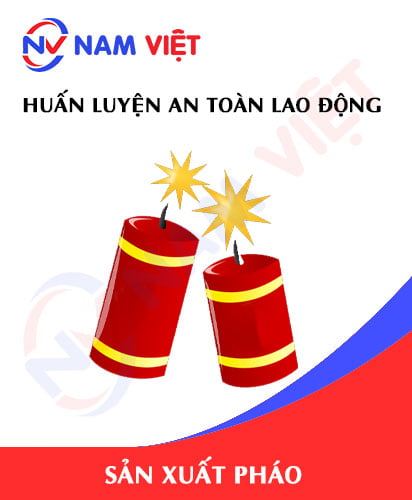
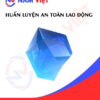
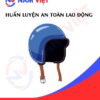



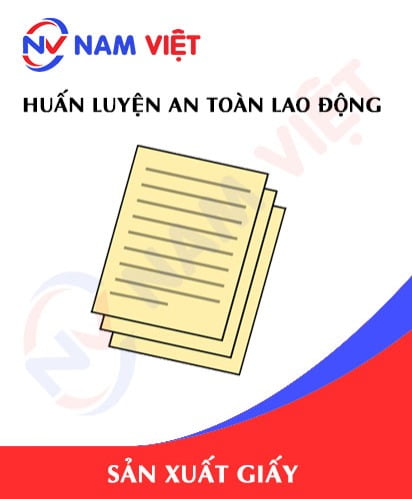

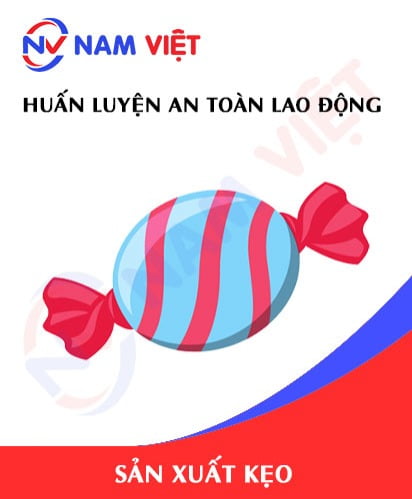
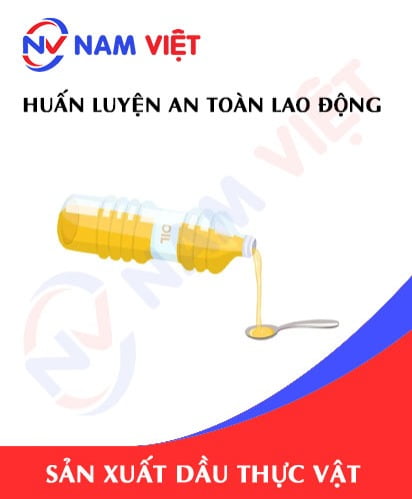




namchinh.haiphong341
Hài lòng nhé!